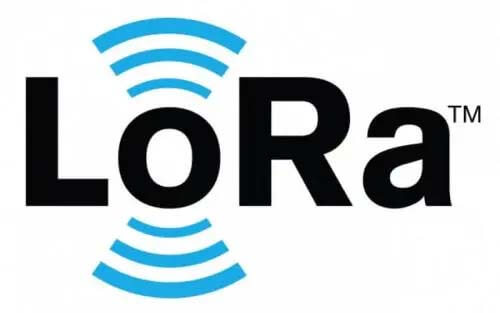LoRa antenna 868 MHz is common used in European markets. Using the license-free Lora frequency bands.

What is a LoRa antenna?
Lora antenna 915 MHz band in the US, Lora antenna 868 MHz in Europe, and Lora antenna 433 MHz in Asia. Lora antennas also called Low Power Wide Area Network (LPWAN) antennas, use advanced signal processing to achieve long-range communications at wavelengths smaller than 1 GHz.
LoRa is a long-range, and low-power wireless technology that is increasingly being used for Internet of Things (IoT) and M2M (machine-to-machine) applications.
By wirelessly making it possible for devices and terminals to run utilizing LoRa innovation, applications can be created for management and tracking without having to utilize mobile networks such as GSM, 3G, or LTE. One Lora antenna can allow the Lora nodes to work. We have some Lora 868Mhz antennas to assist your 868 MHz Lora devices.
How do I choose a LoRa antenna 868 MHz?
The antenna with the higher “dBi” should provide more range. Thus the 5dBi Lora antenna in your second link should provide the greatest range of these options. If your installation is a fixed two-point network, you could probably do better with more directional antennas.
We have many types of LoRa antenna 868 MHz for you to choose from, but we’ll focus on the PCB Lora antenna, Flexible PCB Lora antennas, rubber duck antenna terminal antennas, and external antenna Omnidirectional antenna fiberglass antennas to cover requirements for Lora devices and ISM applications.
Outdoor omnidirectional antennas are usually suitable for concentrator applications that require low signal areas or higher gain antennas. In particular, if you can choose a fiberglass antenna with a good gain factor, the nature of the omnidirectional antenna radiates 360 degrees, allowing you to communicate with other devices and hubs in all directions.
These outdoor Omni fiberglass antennas can be through-hole mount, bracket mount, or pole mount and can provide different levels of gain depending on the size of the antenna. See the Omni Lora antenna CTRF-AD-0850-8296-SMA 2dBi Lora antenna, CTRF-AD-10110-8296-SMA 2.5dBi Lora antenna, CTRF-AD-13190-8593-SMA 3dBi Lora Antenna, CTRF-FB-8593-20550-N for a compact package with a gain of 5.8 dBi Lora antenna. On the other hand, the CTRF-FB-8593-20600-N has a high gain of 8 dBi Lora antenna (slightly larger).
C&T RF Antennas Inc has the Lora antenna 868 MHz fiberglass antenna such as 3dBi Lora Antenna, 4dBi Lora Antenna, 5dBi Lora Antenna, 5.8dBi Lora antenna, 6dBi Lora Antenna, 8dBi Lora Antenna , 9dBi Lora Antenna, 10dBi Lora Antenna, 11dBi Lora Antenna, 12dBi Lora Antenna, 15dBi Lora Antenna, 20dBi Lora antenna for your best choice.
For externally installed antennas that cannot be installed with the terminal antennas, a compact wall-mounted antenna may be used to provide a convenient alternative. The radio may be located in a metal enclosure or cabinet and the terminal antenna cannot be attached directly. Antennas such as the ceiling antenna have a small size and can solve this problem well.
For terminal-mounted antennas, that is, antennas mounted directly on the device or terminal, you can usually use a small rubber ducky antenna (such as LoRa Antenna 868 MHz CTRF-AD-0868-10110-SMA or LoRa Antenna 868 MHz CTRF-AD-0868-13190-SMA) or a dipole antenna similar to the LoRa Antenna 868 MHz CTRF-AD-0868-13195-SMA. Rubber duck antennas are small, portable, and easy to mount.
The choice of the terminal antenna depends on the available space and environment in terms of required performance. Fixed-mount terminal antennas can also be used if the antenna is fixed in place with a nut and cannot be removed, or if the antenna is connected via an RF coaxial cable and RF connector. See, for example, LoRa Antenna 868 MHz type CTRF-FPC-8593-4320-ULF.
For internally mounted antennas, a simple solution is a ground-independent PCB such as a PCB antenna or flexible PCB (FPC) antenna. These internal antennas can be mounted on metal parts or non-metal housings or terminal housings with a gap of at least 15 mm from the surface to provide a sensible way to achieve 868MHz communication without the need for an external antenna Lora 868 MHz.
We hope that the above information provides good ideas for the LoRa antenna 868 MHz solutions and some suggestions on how to choose Lora antenna 868 MHz for your Lora application.
For customers who do not use 868 MHz (for example, USA or Asia), many of the above antennas can be readjusted to 915MHz or 433MHz can be selected as needed.
No matter you are in Europe, the US, or Asia, the Lora antennas including the 433 MHz antennas, 868 MHz antennas, and 915 MHz antennas are all can be purchased via the C&T RF Antennas Inc, the Lora antennas manufacturer in China. Also, a Lora antenna design service can be provided.
If you have some requests and quotes for LoRa antenna 868 MHz, please feel free to contact us.
